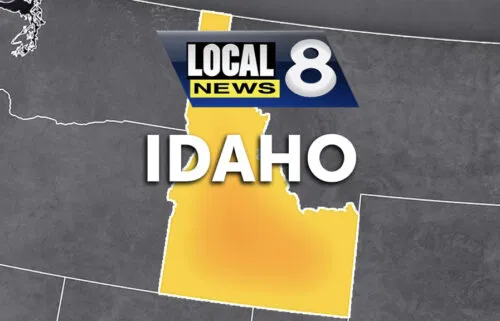Surprise Yellowstone geyser eruption highlights little known hazard at popular park
Associated Press
BILLINGS, Mont. (AP) — A surprise eruption of steam in a Yellowstone National Park geyser basin that sent people scrambling for safety as basketball-sized rocks flew overhead has highlighted a little-known hazard that scientists hope to be able to predict someday.
The hydrothermal explosion on Tuesday in Biscuit Basin caused no injuries as dozens of people fled down the boardwalk before the wooden walkway was destroyed. The blast sent rocks, steam, water and dirt high into the air, according to a witness and a scientist who reviewed video footage of the event.
It came in a park teeming with geysers, hot springs and other hydrothermal features that attracts millions of tourists annually. Some, like the famous Old Faithful, erupt like clockwork and are well understood by the scientists who monitor the park’s seismic activity.
But the type of explosion that happened this week is less common and understood, and potentially more hazardous given that they happen without warning.
“This drives home that even small events — and this one in the scheme of things was relatively small, if dramatic — can be really hazardous,” said Michael Poland, lead scientist at the Yellowstone Volcano Observatory. “We’ve gotten pretty good at being able to understand the signs that a volcano is waking up and may erupt. We don’t have that knowledge base for hydrothermal systems like the one in Yellowstone.”
Poland and other scientists are trying to change that with a fledgling monitoring system that was recently installed in another Yellowstone geyser basin. It measures seismic activity, deformations in the Earth’s surface and low-frequency acoustic energy that could signal an eruption.
The hydrothermal explosions are believed to result from clogged passageways in the extensive natural plumbing network under Yellowstone, Poland said. A clog could cause the heated, pressurized water to turn into steam instantly and explode.
Tuesday’s explosion came with little warning.
Witness Vlada March, who captured widely-circulated video of the explosion, said steam started rising in the Biscuit Basin “and within seconds, it became this huge thing. … It just exploded and became like a black cloud that covered the sun.”
March’s tour guide, Isaac Fisher, told The Associated Press that he heard a hiss coming from Cliff Pool and told his group it was unusual. It looked like a geyser erupting 60 to 70 feet (18 to 21 meters) into the air for a few seconds and then, “Ba-boom!” he said.
“You felt the shock wave hit your chest and vibrate the bones in your chest,” he said. “The explosion was so significant you felt your feet shaking. You felt the boardwalk shake and you felt everything shaking.”
He estimated the whole event lasted about 25 seconds as the debris plume climbed to about 100 meters (328 feet) into the air.
“I cannot believe nobody got hurt,” Fisher said. “There were rocks whizzing over our heads that were the size of basketballs.”
March’s mother, who was closest to the eruption, pulled her hoodie over her head and face and wasn’t injured, Fisher said.
Some of the rocks hurled into the air measured about a meter (3.3 feet) across, said Poland.
Yellowstone encompasses the caldera of a huge, slumbering volcano that shows no sign of erupting any time soon but provides the heat for the national park’s famous geysers, hot springs, mud pots and various other hydrothermal features. While far less common than geyser eruptions, hydrothermal explosions happen often enough in Yellowstone to be studied — and to be a safety concern.
Scientists don’t know if they’ll be able to devise a way to predict the blasts, Poland said.
For a geologist, seeing one in person is a payday. That’s what happened in 2009, when Montana Tech geology professor Mike Stickney and several other geologists were nearby when one happened close to the scene of Tuesday’s blast in the Biscuit Basin.
“It was very sudden and without any detectable warning, just standing on the boardwalk there. It was just was one ‘whoosh’ and it was done. No one saw it coming,” Stickney said.
Though it didn’t register on a sensitive seismometer at Old Faithful a couple miles (3.2 kilometers) away, he estimated the recent explosion was 10 times bigger.
In May, after scientists found a crater a few feet (1-2 meters) wide in the Norris Geyser Basin 18 miles (29 kilometers) north of Biscuit Basin, they consulted acoustic and seismic data from the basin’s new monitoring system and determined a hydrothermal explosion happened April 15, just a few days before roads opened for spring tourist season.
The data included no obvious precursors, however, that could potentially be used to develop a warning system.
Long-term study of where hydrothermal explosions and other ground disruptions can happen in Yellowstone is a focus of University of Wyoming geology professor Ken Sims, who has used ground-penetrating radar and other techniques to identify problem areas.
The information is critical to building roads and bridges in Yellowstone, he said.
“Whenever you build in a super active system like that, you have to pay attention to what’s going on,” Sims said.
A detection system takes time and money to develop, with monitoring stations that can cost roughly $30,000 each.
Yet even if explosions such as the recent one in Yellowstone could be predicted, there’s no feasible way to prevent them, said Poland.
“One of the things people ask me occasionally is, ‘How do you stop a volcano from erupting?’ You don’t. You get out of the way,” Poland said. “For any of this activity, you don’t want to be there when it happens.”
___
Hanson reported from Helena, Montana, and Gruver from Cheyenne, Wyoming.



